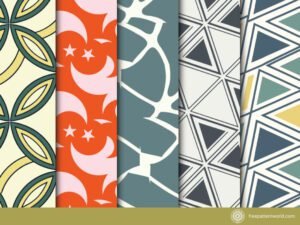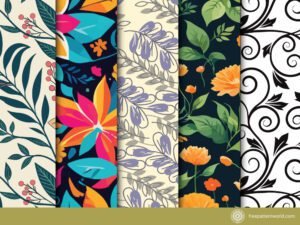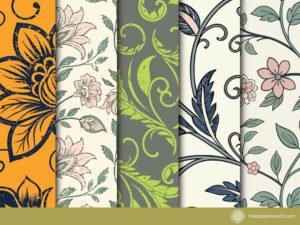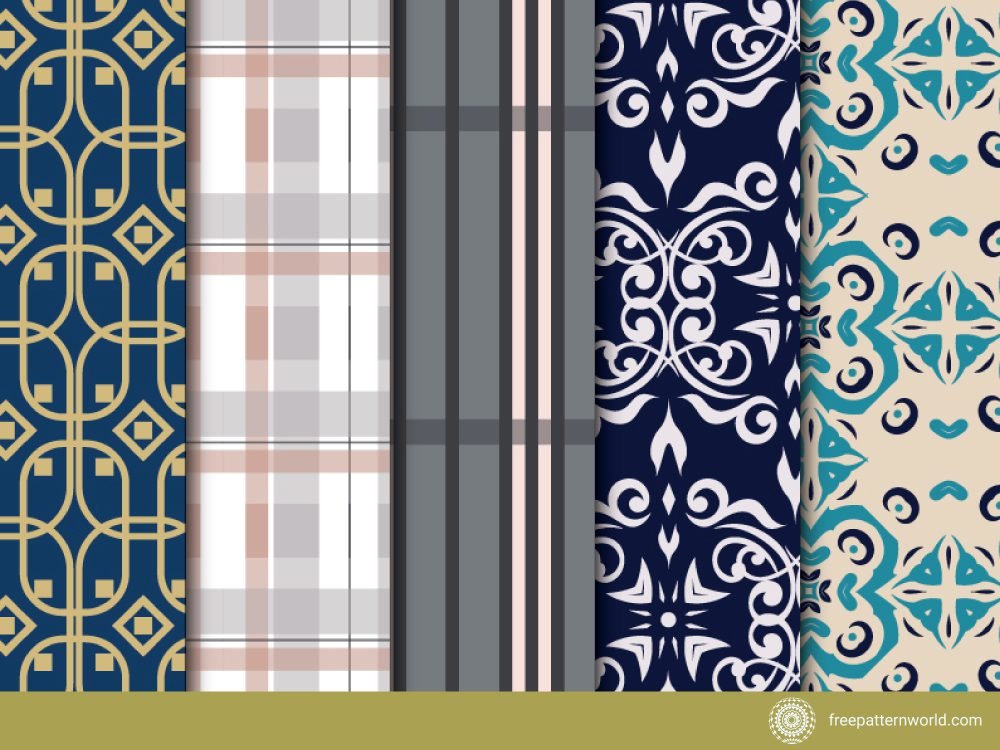
Table of Contents
Introduction
Textile patterns, an integral part of the world of fashion and design, have a rich and diverse history that dates back centuries. These intricate designs, ranging from the subtle to the bold, play a pivotal role in shaping the aesthetics of clothing, interior decor, and various other products. In this exploration of textile patterns, we embark on a journey to unravel the artistry, cultural significance, and technological advancements that have influenced the world of fabric design.
Historical Origins
Textile pattern has roots that extend deep into human history. From the earliest days of civilization, people have adorned themselves and their surroundings with fabrics bearing patterns. Some of the oldest known textile patterns date back to ancient civilizations, such as the Indus Valley and ancient Egypt.

Ancient Mesopotamia and Egypt: In Mesopotamia and Egypt, intricate textile pattern adorned clothing and furnishings. These early patterns often featured geometric shapes and symbols representing themes like nature, religion, and mythology.
Asian Influence: Asia has played a significant role in the history of textile patterns. Chinese silk textiles, for example, were highly sought after for their exquisite designs and craftsmanship. The use of textile patterns in Asian cultures often conveyed social status, and designs were inspired by nature, animals, and folklore.
Islamic Art: Islamic art and architecture introduced the world to the beauty of geometric patterns and intricate arabesques. These patterns, often inspired by nature, are a hallmark of Islamic textiles and calligraphy.
Cultural Significance
Textile patterns are not just decorative; they also carry cultural significance and convey stories, traditions, and beliefs.

African Textile Traditions: African textiles are renowned for their vibrant patterns and storytelling qualities. Adinkra symbols from West Africa, for instance, carry specific meanings and are used in fabric design to convey messages of wisdom, proverbs, and cultural values.
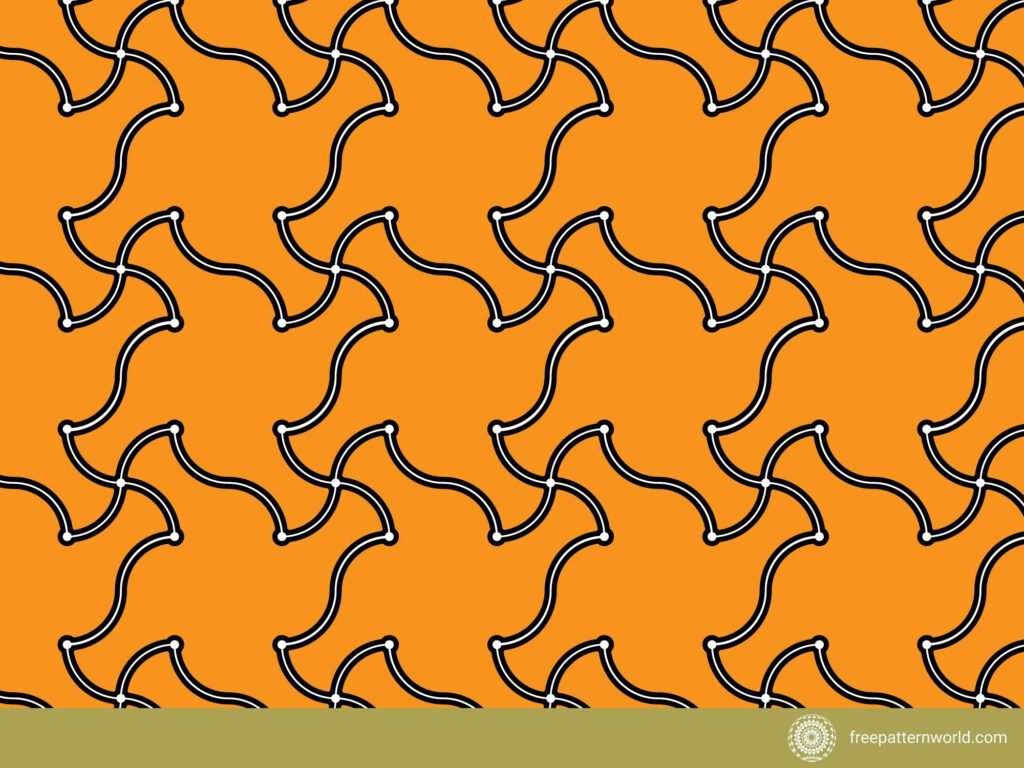
Indigenous Textile Art: Indigenous communities around the world have a rich tradition of textile art. From Navajo blankets to Aboriginal dot paintings, these patterns often hold spiritual and ancestral significance.
Ethnic Attire: Traditional clothing from different cultures often features distinct textile patterns. For example, the intricate patterns found in Indian saris or Japanese kimonos are emblematic of their respective cultural identities.
Fashion and Textile Patterns
Textile patterns have a profound impact on the world of fashion. Designers leverage patterns to create unique and memorable clothing lines.

Haute Couture: In the world of high fashion, textile pattern is often custom-designed for runway collections. Iconic fashion houses like Chanel and Dior are known for their distinctive patterns that transcend seasons.
Streetwear: Streetwear fashion frequently incorporates bold and eye-catching textile patterns, from camouflage prints to graffiti-inspired designs. Brands like Supreme and Off-White are renowned for their pattern-centric streetwear.
Cultural Fusion: Contemporary fashion often blends textile patterns from diverse cultures. This fusion has given rise to exciting and innovative designs that celebrate global diversity.
Textile Patterns in Home Decor
Textile patterns are not confined to fashion; they also play a pivotal role in interior design and home decor.

Upholstery and Drapery: Patterns on upholstery and drapery can transform the ambiance of a room. From floral motifs to geometric shapes, these patterns are chosen to harmonize with the overall decor theme.
Wallpapers: Wallpapers with intricate patterns have made a resurgence in interior design. Whether it’s a classic damask or a contemporary geometric design, wallpapers add depth and personality to living spaces.
Rugs and Carpets: Rugs and carpets often feature elaborate patterns that reflect cultural influences or artistic expressions. Persian rugs, for example, are famous for their intricate designs.
Sustainability and Ethical Considerations
As sustainability becomes increasingly important, the textile industry is reevaluating its practices. Sustainable textile patterns are designed with eco-friendly materials and production processes in mind.

Recycled Materials: Textile designers are experimenting with recycled and upcycled materials to create patterns that minimize waste and reduce environmental impact.
Ethical Production: Ethical considerations are paramount in textile design. Designers are seeking ways to ensure fair labor practices and responsible sourcing of materials.
Future Trends
The future of textile patterns promises exciting developments, including smart textiles with embedded technology, 3D-printed fabrics, and sustainable innovations that redefine the industry.
Download more free pattern designs from freepatternword and freepik.
Support Us with Crypto!
If you enjoy our content and want to help keep this site running, you can support us with crypto. Your support is appreciated!
USDT(TRC20): TSW1iyNhUHiGvc2VdQvZqkqgCTGvdrnsY7
Bitcoin: 38ZHQNkrbZKYJhbLeFZiCrQdR3C2ddtAzV
ERC-20: 0xe1BD9D788256905c6efFd38333A3fF1b6DE3ce67
What are textile pattern?
Textile pattern are decorative design or motif applied to fabrics. These patterns can be created through various techniques, such as weaving, printing, or embroidery, and they add visual interest to textiles.
What is the history of textile patterns?
Textile patterns have a rich history dating back to ancient civilizations. They were used for both practical and decorative purposes and often carried cultural and symbolic significance.
How are textile pattern created?
Textile patterns can be created through different methods, including weaving, printing, dyeing, embroidery, and digital design. Each method offers unique possibilities for creating intricate designs.
What are some famous textile patterns from different cultures?
Some examples of famous textile patterns include:Paisley patterns from India
Adinkra symbols from West Africa
Japanese kimono patterns
Native American Navajo blankets
Persian rug designs
Are there sustainable practices in textile pattern design?
Yes, sustainable textile pattern design focuses on eco-friendly materials, ethical production, and reduced environmental impact. Designers are increasingly adopting sustainable practices to minimize waste and promote responsible sourcing.
What are some emerging trends in textile pattern design?
Emerging trends in textile pattern design include the use of smart textiles with embedded technology, 3D-printed fabrics, and sustainable innovations that prioritize environmental and ethical considerations.
How can I incorporate textile patterns into my daily life?
You can incorporate textile patterns into your daily life through clothing choices, home decor, accessories, and even art. It’s a way to express your personal style and appreciation for the beauty of fabric design.

